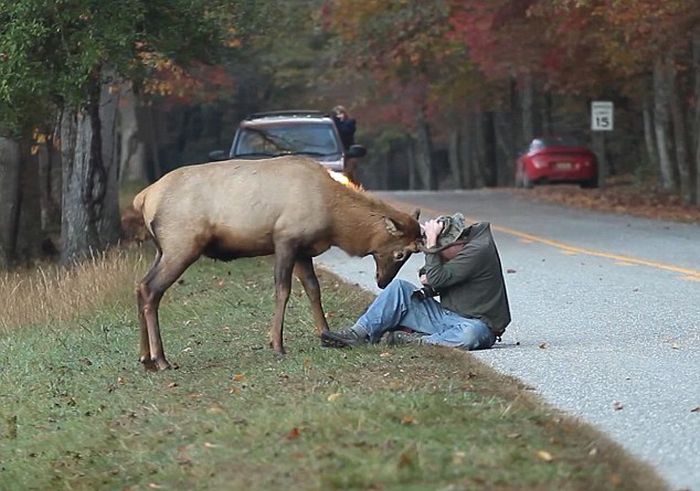|
|
Elk Attacks A Photographer, Great Smoky Mountains National Park, North Carolina, Tennessee, United States
|
Taxonomy
Members of the genus Cervus (and hence early relatives or possible ancestors of the elk) first appear in the fossil record 25 million years ago, during the Oligocene in Eurasia, but do not appear in the North American fossil record until the early Miocene. The extinct Irish Elk (Megaloceros) was not a member of the genus Cervus, but rather the largest member of the wider deer family (Cervidae) known from the fossil record.
Until recently, red deer and elk were considered to be one species, Cervus elaphus. However, mitochondrial DNA studies, conducted on hundreds of samples in 2004 from red deer and elk subspecies as well as other species of the Cervus deer family, strongly indicate that elk, or wapiti, should be a distinct species, namely Cervus canadensis. The previous classification had over a dozen subspecies under the C. elaphus species designation; DNA evidence concludes that elk are more closely related to Thorold's deer and even sika deer than they are to the red deer. Though elk and red deer can produce fertile offspring in captivity, geographic isolation between the species in the wild and differences in mating behaviors indicate that reproduction between them outside a controlled environment would be unlikely. However, the two species have freely inter-bred in New Zealand's Fiordland National Park, where the cross-bred animals have all but removed the pure elk blood from the area.
|
|









